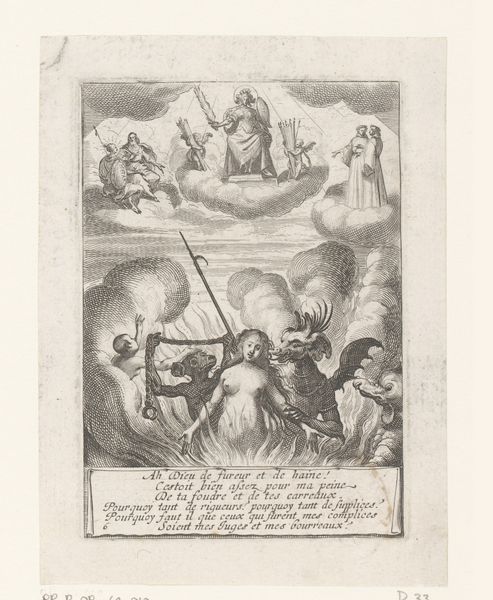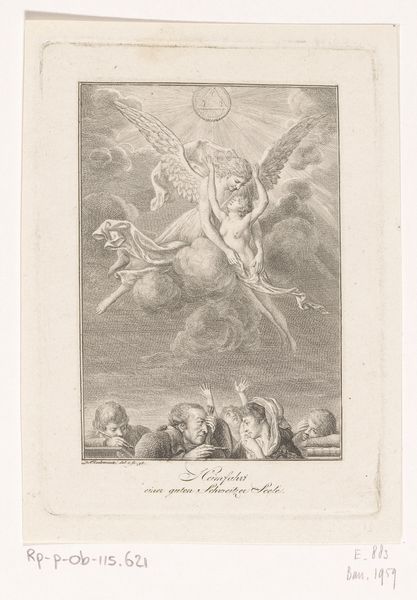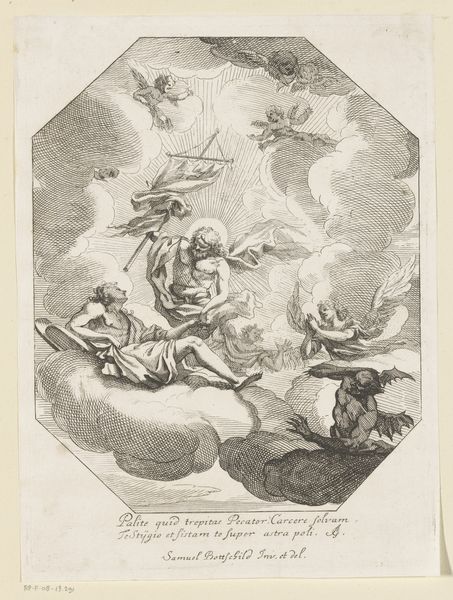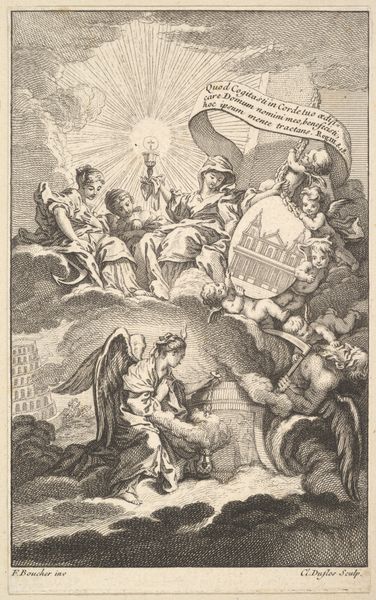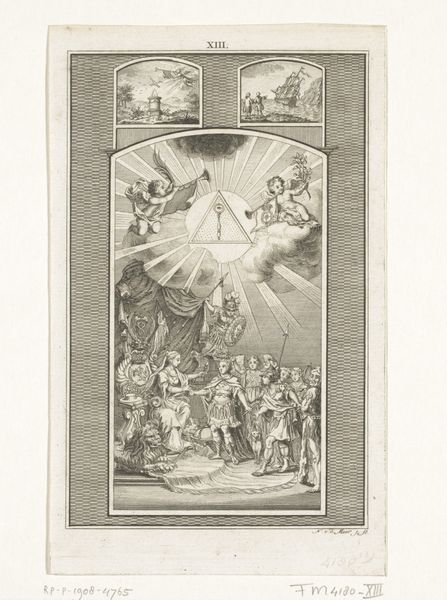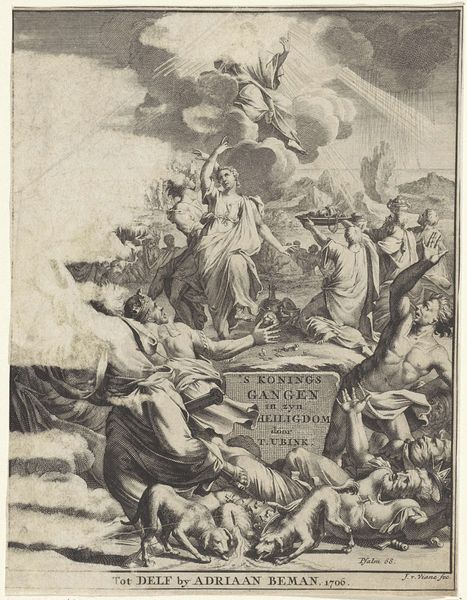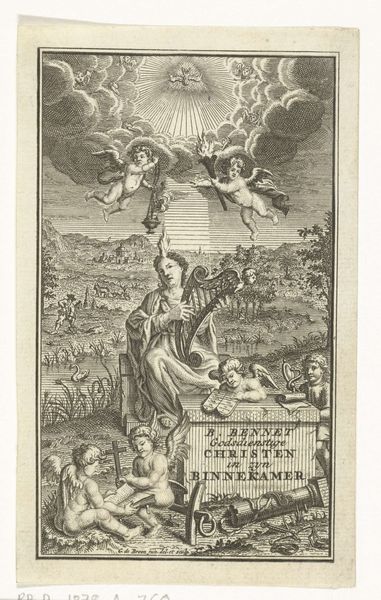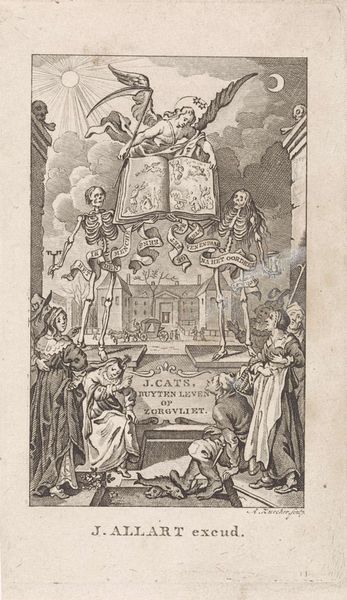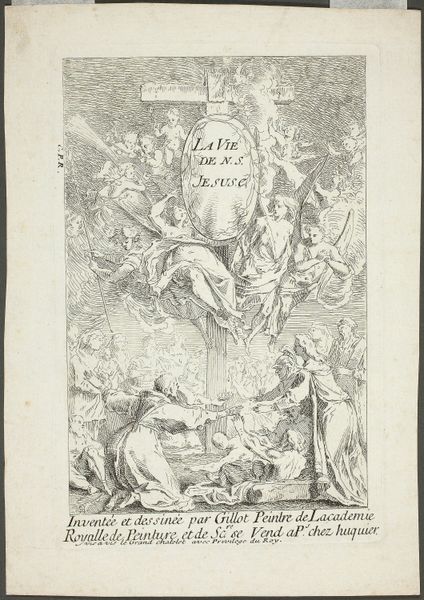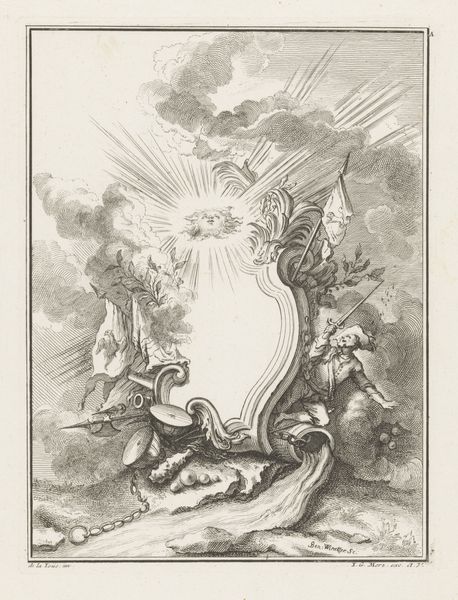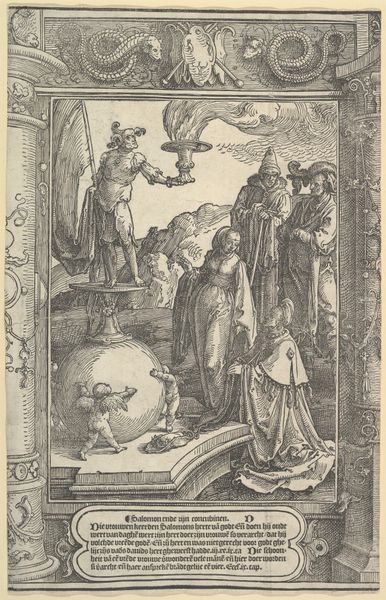
Two women holding a banner at center as a phoenix rises above; set design from 'Il Fuoco Eterno' 1674
0:00
0:00
drawing, print, engraving
#
drawing
#
allegory
#
baroque
# print
#
history-painting
#
engraving
Dimensions: Sheet (Trimmed): 10 3/16 × 6 9/16 in. (25.9 × 16.7 cm)
Copyright: Public Domain
Curator: Here we have Mathäus Küsel's "Two women holding a banner at center as a phoenix rises above; set design from 'Il Fuoco Eterno'", created in 1674. Editor: It feels incredibly optimistic, almost like a promise. The delicate lines of the engraving, even in the representation of smoke and clouds, suggest this feeling. It makes one reflect on beginnings. Curator: Absolutely, and let's contextualize this work. Küsel designed this as a set for "Il Fuoco Eterno", Eternal Fire, an allegorical drama. These theatrical elements offer significant insight into the political and cultural functions of art during the Baroque era. Theatre was heavily tied with the dissemination of power and cultural values. Editor: The labor involved in printmaking for theatrical design should also not be discounted, requiring immense skill from specialized artisans, even with designs such as this that would seem ephemeral today. It shows a relationship with performance where materiality intersects with stagecraft. Note the emphasis on raw materials like paper and ink used to facilitate this transfer and amplify visibility of such works. Curator: That connection to visibility is so important. The play would likely have served a specific social purpose tied to the identity or message some member of the ruling class or aristocracy hoped to spread; consider how theatre and printing served as vehicles for conveying explicit political agendas. The phoenix rising—rebirth and renewal—suggests it served to affirm dynastic power, resilience. Editor: And that banner those women hold aloft... the very literal text adds to the didactic mood. One almost feels compelled to interpret and internalize what it espouses. Is the promise it relays truly meant to uplift? Curator: Baroque art loved overt display—intellectual and material. Editor: Yes, it's that spectacle... the dramatic reveal, as well the method of the art making itself, so meticulous in its crafting, which ultimately served its intended function, one hopes it still resonates with a contemporary audience. Curator: Exactly, even beyond its theatrical context, the work as a stand-alone print reveals broader values that underpinned political culture during its time, leaving us to reflect how messages persist across artistic forms and purposes. Editor: Leaving the piece, one sees it for what it truly represents beyond image. I look to not just what it depicts but how such art objects operated inside structures like stagecraft workshops or theaters, making meaning then... and still speaking to that labor and messaging even now.
Comments
No comments
Be the first to comment and join the conversation on the ultimate creative platform.

